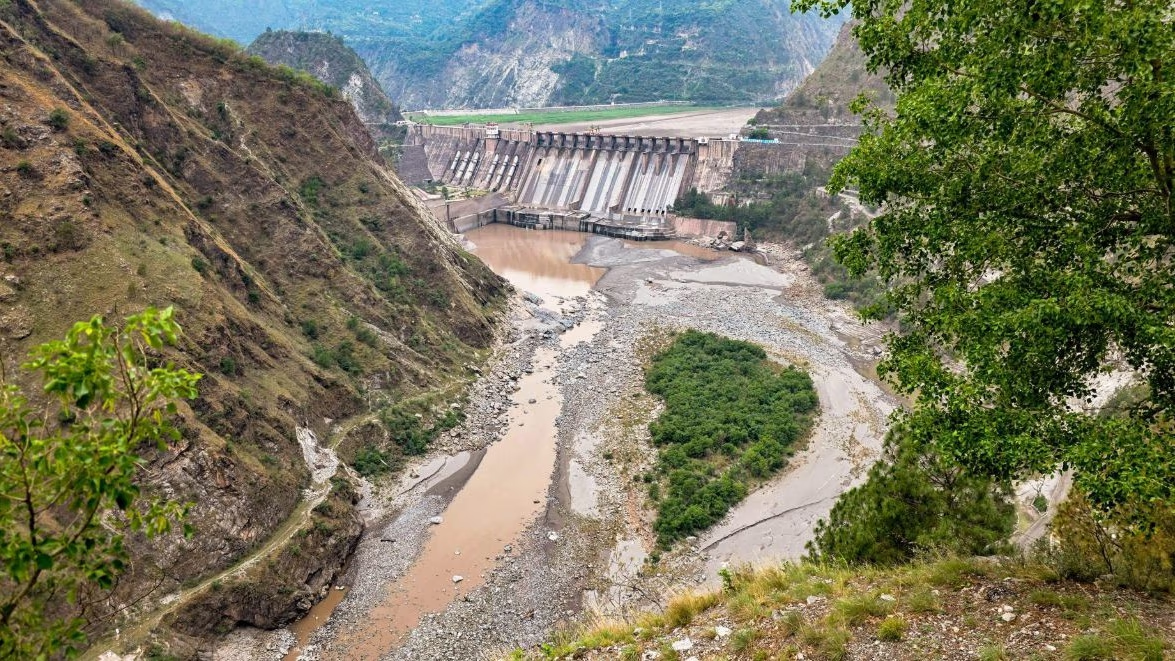Following the Pahalgam terrorist attack, it is time to teach Pakistan a lesson. India has already suspended the Indus Waters Treaty, and now, the gates of the Baglihar and Salal dams on the Chenab River have been closed. This has caused the complete stoppage of Chenab's flow to Pakistan under the Indus River System, causing the neighboring country to run dry.
Only 2 Feet of Water in Chenab
In recent days, persistent rains in the mountains caused overflow, leading to the opening of several gates of the Salal Dam. However, the government has once again completely stopped the flow of water towards Pakistan. Moreover, post the closing of Baglihar dam gates in Ramban, the Chenab river's flow has significantly decreased.
Experts believe that reduced Chenab waters could adversely affect both agriculture and the environment in Pakistan. Local inhabitants report that where the river's water level used to reach 25-30 feet, it now barely flows with 2 feet of water, revealing the rocky riverbed and the stones that line its path.

Source: aajtak
Crops Devastated in Pakistan
According to a report by 'Dawn,' India is halting the water entering Pakistan from the Chenab and other rivers. Following this, Islamabad's Indus River System Authority (IRSA) Advisory Committee has voiced concerns. IRSA prognosticates a 21% water scarcity during Pakistan's early Kharif season, potentially leading to substantial crop damage.
Threat of Flooding Looms
India is proactively preparing the Baglihar and Salal Hydro Power Projects on the Chenab River in Jammu and Kashmir to store water bound for Pakistan during the winter months. This includes reservoir flushing and sediment removal. Moving forward, India plans to implement similar procedures in other dams to further enhance internal water storage capacity. With the suspension of the Indus Water Treaty, India is preparing to control the flow of the Indus, Jhelum, and Chenab rivers flowing into Pakistan.
The challenge Pakistan faces goes beyond potential crop failures due to blocked water. Pakistan fears that if India keeps the water back for 4-5 days and then suddenly releases it without any prior warning, it could pose a flood threat to riverbank settlements.
Not too long ago, Pakistan endured a similar flood situation when heavy rains led to India releasing water from the Salal Dam, causing flood-like conditions in the aftermath. Post the rains, Chenab's water level rose five to seven feet above normal, triggering alerts in low-lying areas of PoK. Regions like Surakpur, Headmarala, Uri, Marikohra, Behlapur, and Gangwal were placed on high alert.




